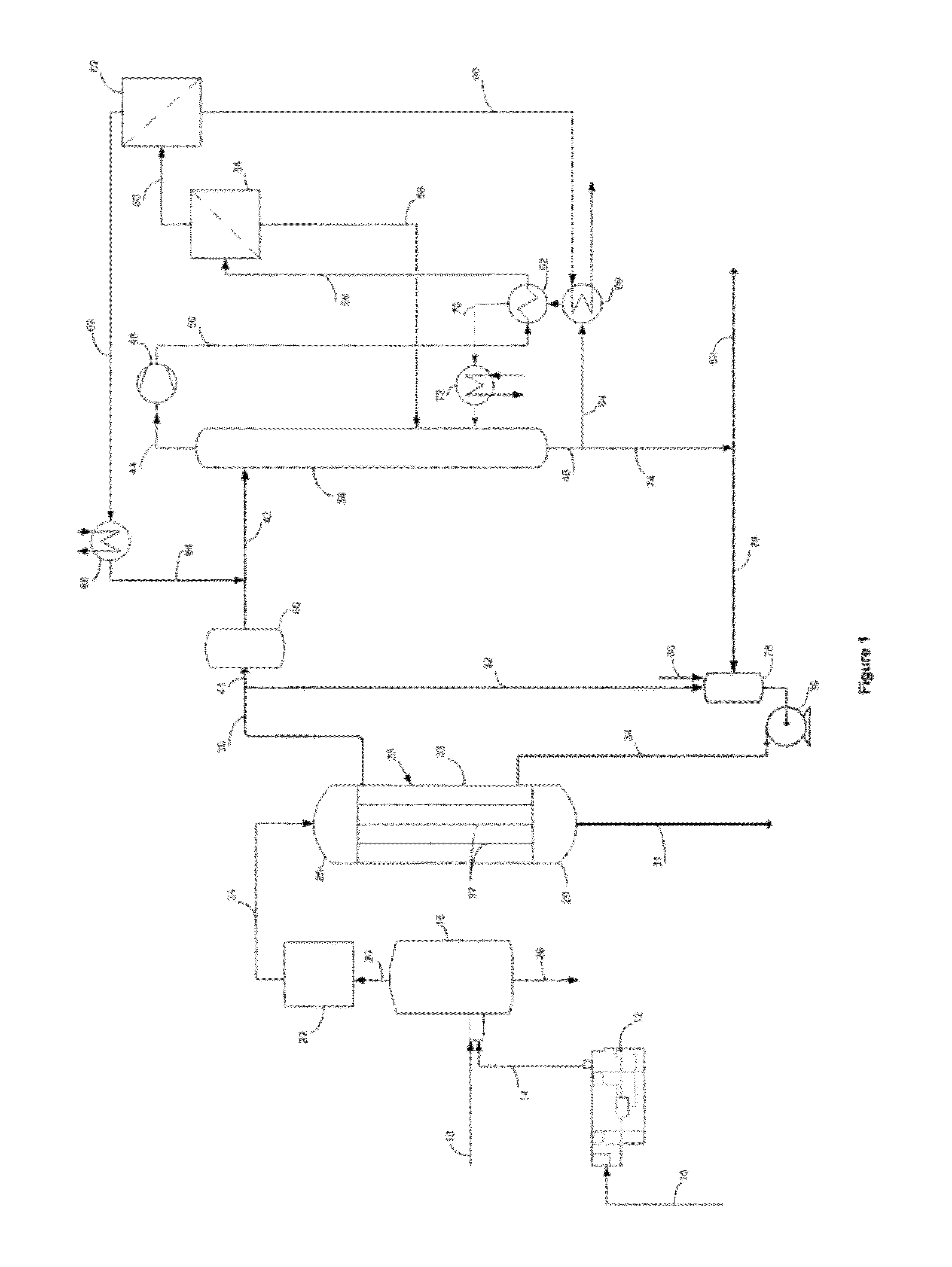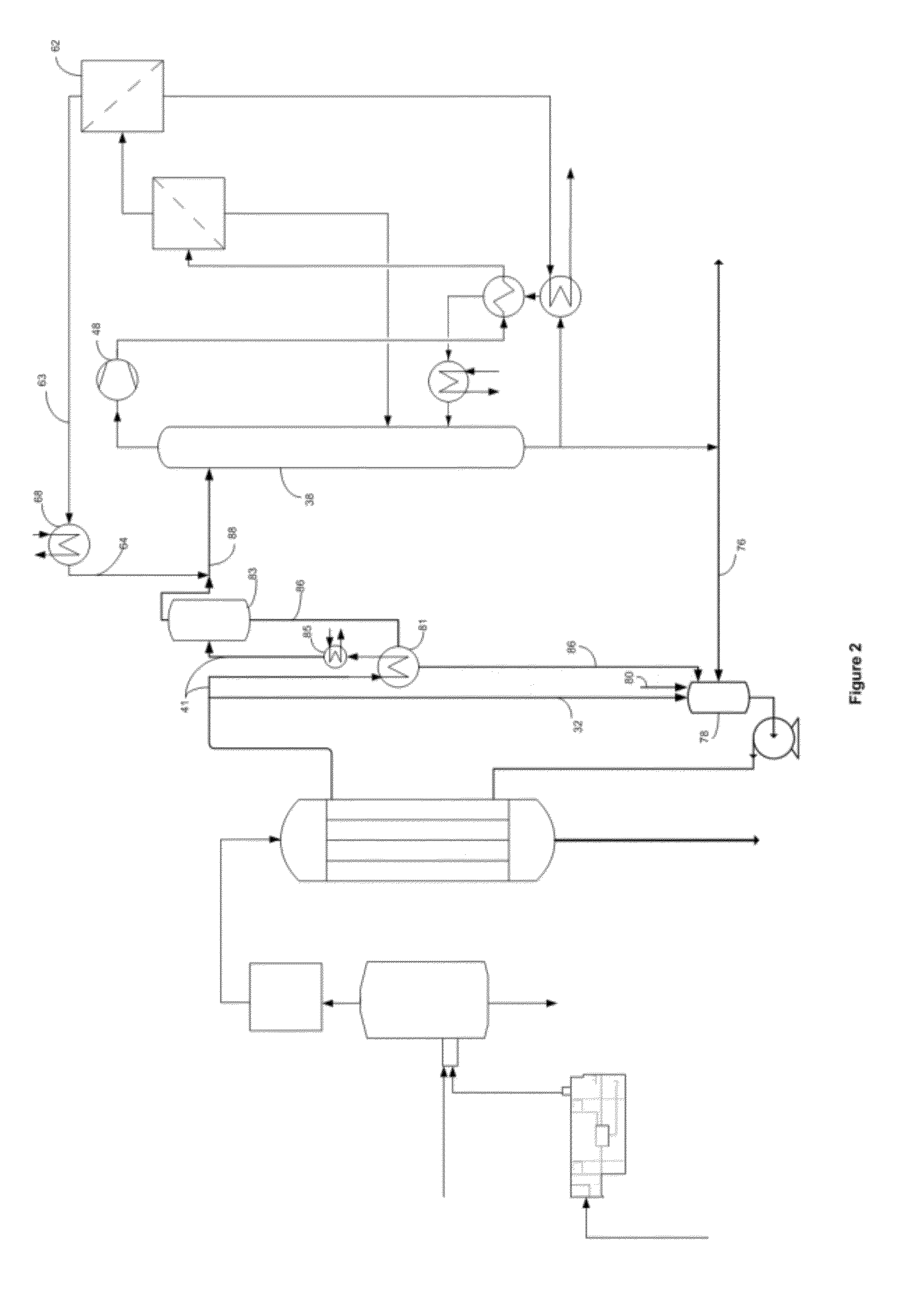Process for producing ethanol
a technology of ethanol and ethanolic acid, which is applied in the field of process for producing ethanol, can solve the problems of inability of conventional yeasts to ferment csub>5/sub>sugar to ethanol, inability to efficiently and inability to achieve bioconversion. , to achieve the effect of efficient and economically separate ethanol
- Summary
- Abstract
- Description
- Claims
- Application Information
AI Technical Summary
Benefits of technology
Problems solved by technology
Method used
Image
Examples
example 1
[0057]For convenience this invention is further described in the context of a calculated example using a membrane type bioreactor. Such description is not intended to limit the separation described herein to the particular arrangement of this example or to any particular bioreactor arrangement. Any bioreactor producing ethanol in a liquid medium may be integrated with the separation elements of this invention.
[0058]To establish a conversion level of a typical syngas type feed a Liqui-Cel® membrane contactor MiniModule® 1×5.5 from Membrana (Charlotte, N.C.) is used as a membrane supported bioreactor for the conversion of carbon monoxide and hydrogen into ethanol. This membrane module contains X50 microporous hydrophobic polypropylene hollow fibers with 40% porosity and 0.04 μm pore size. The fiber outer diameter is 300 μm and internal diameter 220 μm. The active membrane surface area of the module is 0.18 m2. A gas containing 40% CO, 30% H2, and 30% CO2 is fed to the lumen of the fib...
example 2
[0066]The conversion rate and flow rates of Example 1 were scaled up to provide input for a calculated example demonstrating the separation of a dilute ethanol stream in the separation section of the process. In accordance with the separation section depicted in FIG. 1, 1136 kg / hr of an ethanol effluent having an ethanol concentration of 1 wt % flows through a purifier while the remaining 22710 kg / hr of an ethanol effluent enters a recirculation loop for its return to the bioreactor as a broth fraction.
[0067]The dilute ethanol from the purifier flows into an upper section of a distillation column at a temperature of 76° C. and under vacuum conditions. The vacuum distillation column of this example provides 20 stages of separation. Overhead vapor having an ethanol concentration of 52.5 wt % flows from the vacuum column at a rate of 25.1 kg / hr and a temperature of 73° C. Compression of the vapor to 1.6 atm raises its temperature to 177° C.
[0068]Cooling of the vapor in the vacuum colum...
PUM
| Property | Measurement | Unit |
|---|---|---|
| wt % | aaaaa | aaaaa |
| wt % | aaaaa | aaaaa |
| linear velocity | aaaaa | aaaaa |
Abstract
Description
Claims
Application Information
 Login to View More
Login to View More - R&D
- Intellectual Property
- Life Sciences
- Materials
- Tech Scout
- Unparalleled Data Quality
- Higher Quality Content
- 60% Fewer Hallucinations
Browse by: Latest US Patents, China's latest patents, Technical Efficacy Thesaurus, Application Domain, Technology Topic, Popular Technical Reports.
© 2025 PatSnap. All rights reserved.Legal|Privacy policy|Modern Slavery Act Transparency Statement|Sitemap|About US| Contact US: help@patsnap.com


